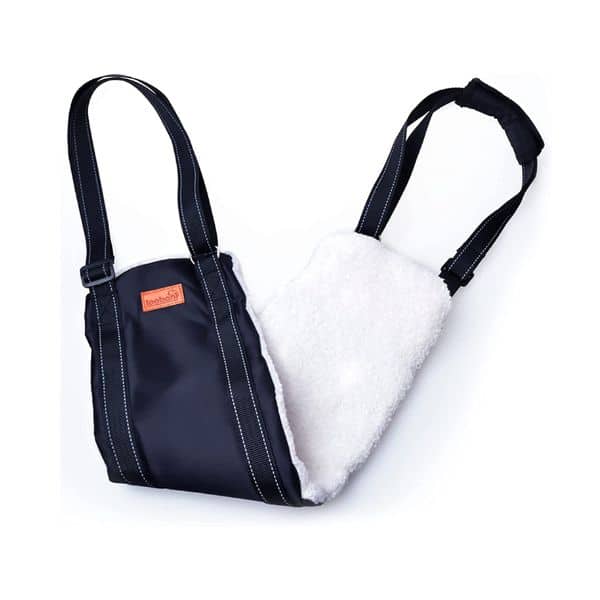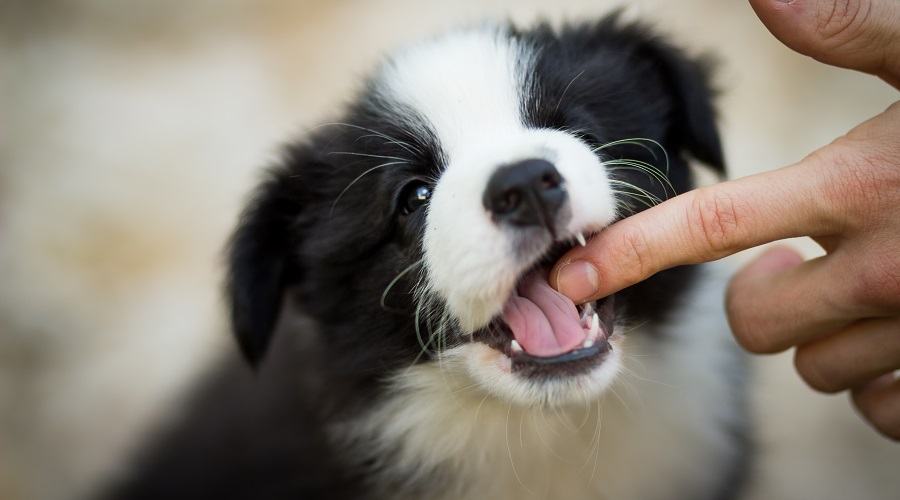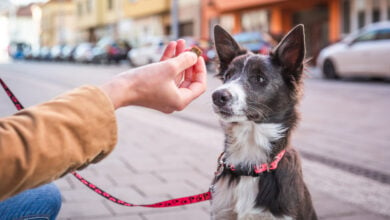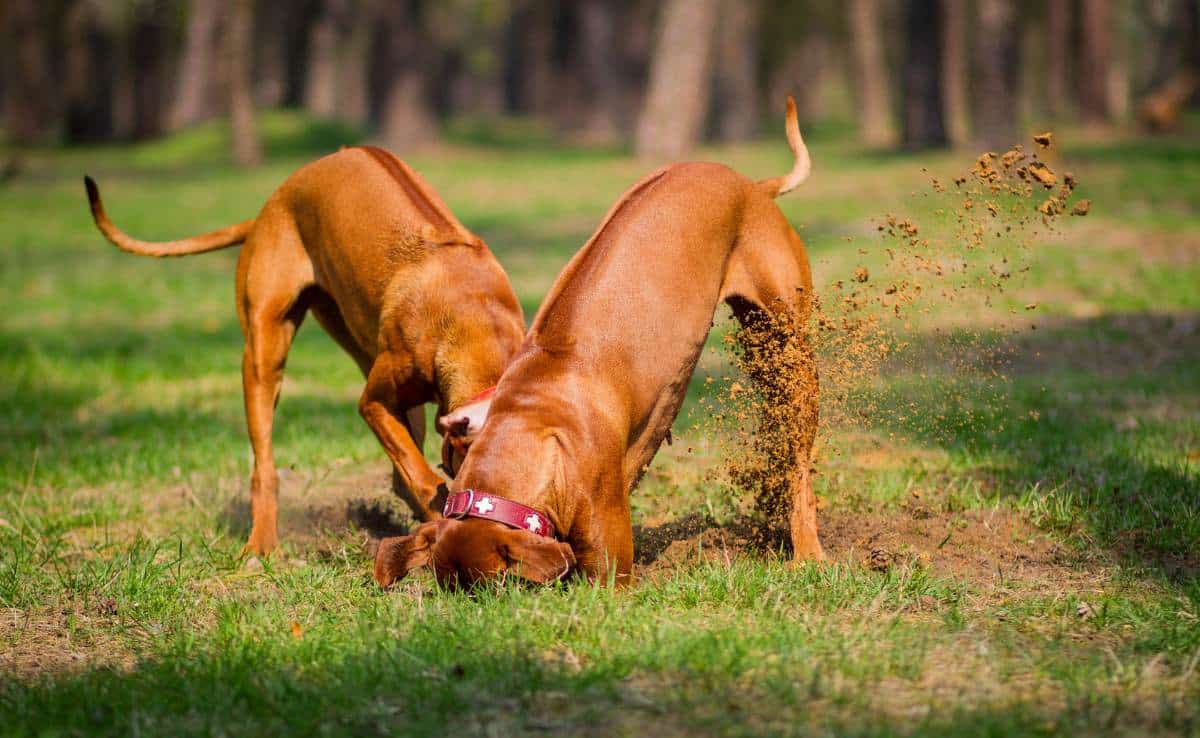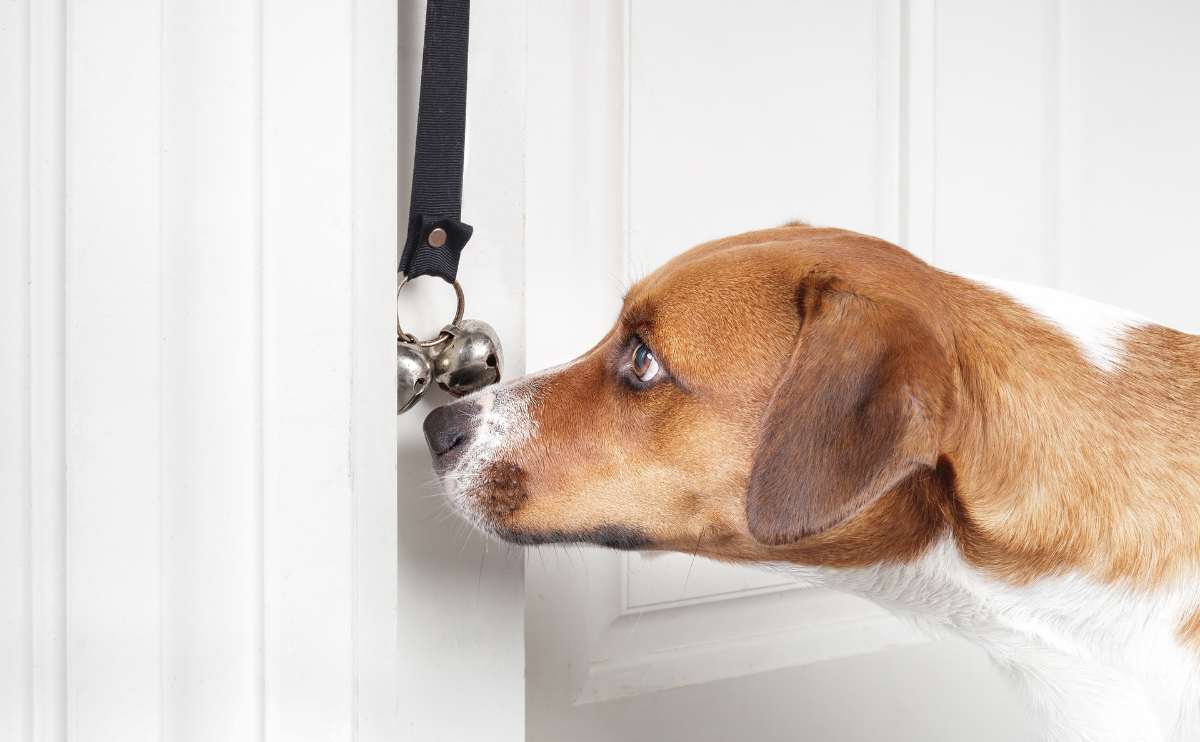Dog Stair Safety: 8 Proven Tips To Prevent Slips, Falls & Vet Bills
When you purchase through links on our site, we may earn a commission. Here’s how it works.
Did you know stair-related falls send thousands of dogs to the vet every year, and that many of these injuries are completely preventable? From energetic puppies to aging spaniels, dogs of all sizes and breeds can slip, stumble, or hesitate on the stairs, leading to painful sprains, fractures, or even spinal trauma. Practicing effective dog stair safety at home can make a major difference.
Table of Contents
With just a few thoughtful changes, such as improving traction, limiting access, and training your dog to navigate stairs safely, you can reduce the risk of injury and protect your dog’s mobility.

Start Here: Could Your Dog Be at Risk?
When it comes to dogs, stairs are bad news. It doesn’t matter if you’ve got a large staircase joining upstairs, or a few steps on your porch. Stairs are an accident waiting to happen. An excited dog rushing down your stairs can easily slip and tumble. And going up isn’t much better, especially for elderly dogs with hip and joint problems. Navigating a staircase can be difficult and painful.
– Dr. Sara Ochoa, DVM, Small Animal Veterinarian
But it doesn’t have to be this way.
The Hidden Dangers of Stair Injuries
You might think your dog has mastered the stairs, but a single misstep can lead to serious consequences. From torn ligaments to spinal trauma, stair-related falls are among the most common yet preventable household injuries in dogs.
Senior dogs, puppies, and breeds with long backs, such as Dachshunds or Corgis, are especially vulnerable. Even healthy dogs may misjudge steps due to poor lighting, slick surfaces, or momentary distraction.
Did you know? Research published in the Journal of Small Animal Practice highlights that osteoarthritis and degenerative joint disease are among the leading causes of mobility impairment in senior dogs, often going undiagnosed until the condition significantly impacts daily function.
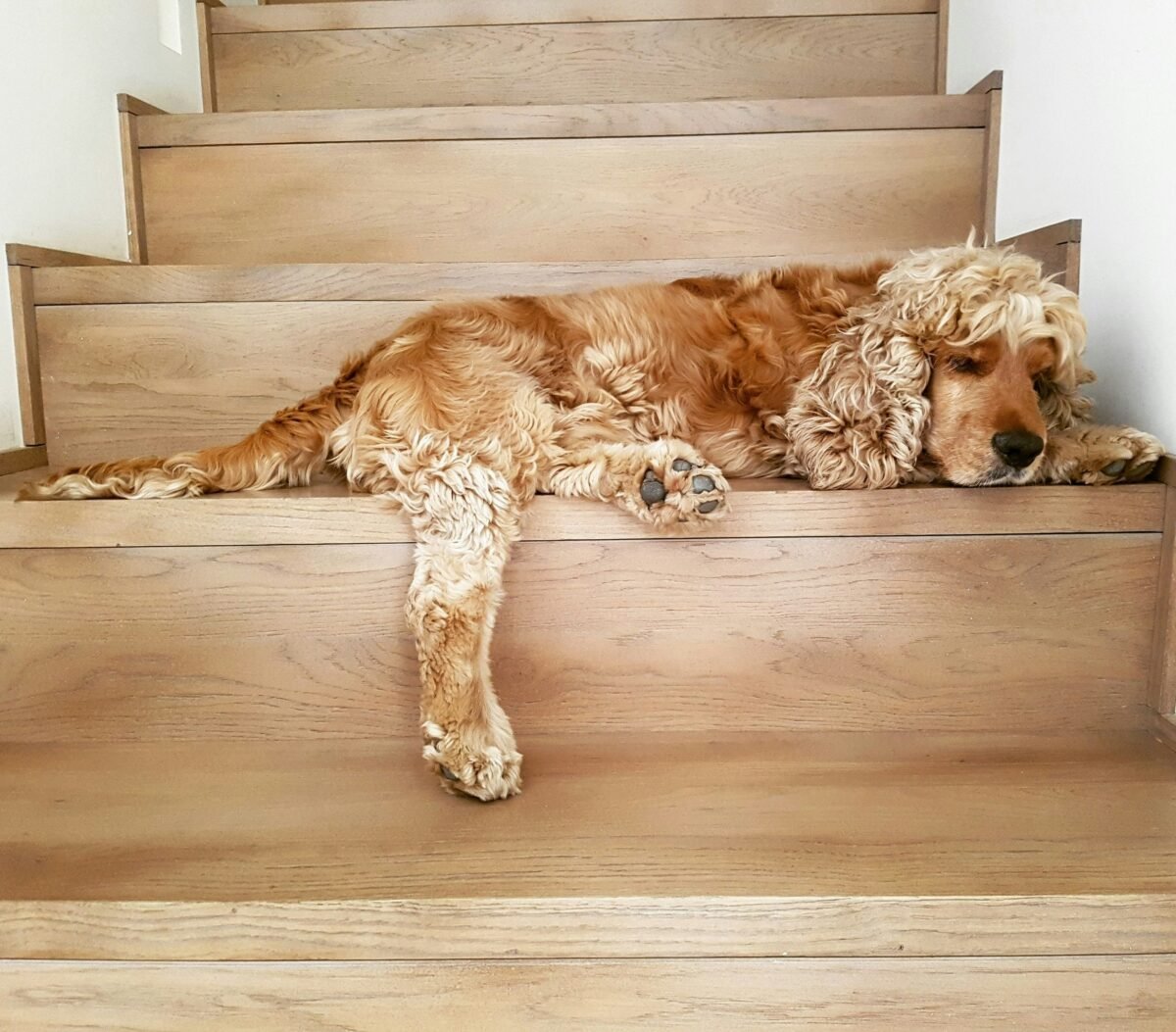
5 Signs Your Dog Is Struggling With Stairs
If your dog is hesitating on the stairs, it should not be ignored. These warning signs often indicate pain, fear, or sensory issues such as vision loss:
- Pausing at the top or bottom of the staircase
- Favoring a specific leg or hopping instead of stepping
- Refusing to use stairs that they once handled easily
- Wobbling, slipping, or showing poor coordination
- Whining, pacing, or appearing anxious when approaching stairs
If any of these behaviors sound familiar, now is the time to act before a minor issue becomes a serious injury.
Why Every Pet Owner Should Take Stair Safety Seriously
Dogs are naturally resilient, but their bodies change with age. As dogs grow older, their joints weaken, their eyesight can decline, and their balance often becomes compromised. Most homes, however, are not designed with canine safety in mind.
Taking steps to prevent stair injuries is not just about physical safety. It is also about protecting your dog’s independence and long-term quality of life. With the right adjustments, even aging or mobility-challenged dogs can navigate stairs more safely, or avoid them altogether.
8 Proven Dog Stair Safety Tips Every Pet Owner Should Know
When it comes to protecting your dog from stair-related injuries, the first step isn’t installing gates or laying down carpet; it’s understanding the root of the problem. Before making any changes at home, it’s essential to consider whether an underlying issue could be making stairs difficult or dangerous for your dog.
Once you’ve addressed that possibility, there are several proven strategies you can use to make your stairs safer, more manageable, and less stressful for your pet.
1. Rule Out a Medical Cause
Before making any adjustments to your home, it’s essential to rule out medical issues that could be affecting your dog’s ability to navigate stairs. Pain, vision loss, or balance problems can all cause hesitation or falls, and without identifying the cause, even the best safety upgrades won’t fully protect your dog.
A veterinary checkup ensures you’re not overlooking a health condition that may be putting your pet at risk.
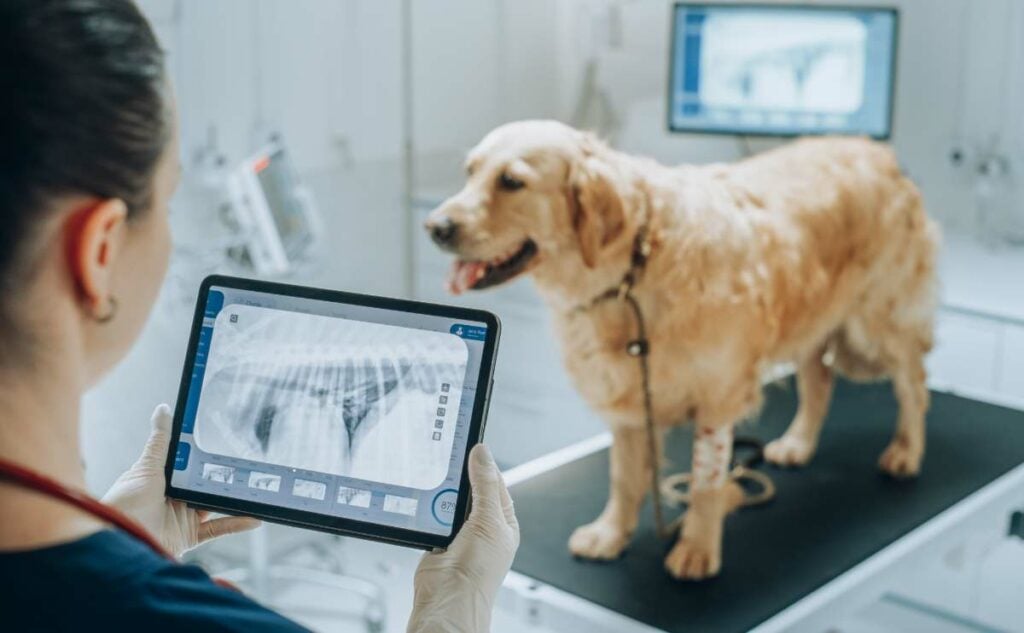
Common Medical Issues That Can Make Stairs Difficult for Dogs
Some health conditions can make stair use painful or unsafe for your dog. These issues often develop gradually and may go unnoticed at first:
- Arthritis – Causes joint stiffness and pain, especially in older dogs.
- Hip or Hind Leg Weakness – Reduces strength and stability on stairs.
- Joint Problems – Includes ligament damage or kneecap dislocation.
- Nerve Damage – Can lead to weakness or poor coordination.
- Vestibular Disease – Affects balance and causes dizziness or unsteadiness.
If your dog shows hesitation, limps, or seems off-balance, have your vet evaluate them before making environmental changes.
A Word From The Vet
The symptoms may be invisible on flat ground. However, once your pup climbs up the stairs, they can be easily spotted. It’s at this stage that many owners miss the medical issue and blame the stairs instead. Don’t make the same mistake. The next time your dog goes up or down the stairs, watch him closely – you may notice clues that you should take your dog to the vet for a check-up.
For example, a dog who awkwardly hops up the stairs may have hip issues, a dog that stumbles while heading down the stairs may have joint problems, and a dog that leans against the wall when ascending or descending may have a neurological issue.
Don’t delay in seeing a vet. If caught in the early stages, many of these medical issues are treatable or manageable, and your pup will have a better life for it!
– Dr. Sara Ochoa, DVM, Small Animal Veterinarian
2. Secure the Zone: Block Unsafe Stair Access
Sometimes the simplest way to prevent stair-related injuries is by keeping your dog off the stairs entirely, especially when you’re not around to supervise. Blocking off stairways can help reduce accidents, particularly in homes with senior dogs, small breeds, or dogs recovering from injury.
Install a Pet Gate
A high-quality baby or pet gate is one of the most effective ways to control access to stairs. Look for models that are durable, easy to open and close, and tall enough to prevent jumping.
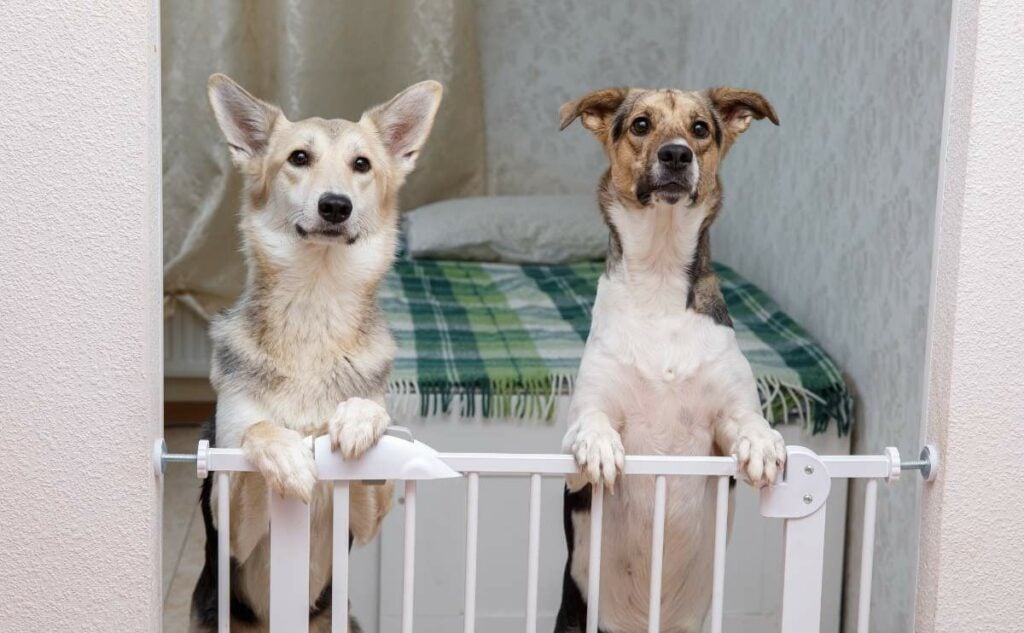
Top pick: The Regalo Easy Step 38.5-Inch Extra Wide Walk Thru Baby Gate is a popular choice for stair tops. It mounts securely to the wall, swings in one direction for added safety, and has a childproof latch that’s easy for adults to operate.
Try DIY Barrier Solutions
If you have unusually shaped staircases or need a temporary solution, consider a custom or improvised barrier. For example:
- Use a piece of lightweight plywood or a tension-mounted panel for wide stairways.
- Place a heavy-duty exercise pen or baby gate sideways to block wider openings.
- Add adhesive-backed foam padding if your dog tends to push or paw at the barrier.
When and Where to Restrict Access
You don’t always have to block stairs 24/7. In some situations, temporary access control is the safest option:
- At night: Senior dogs may be more prone to disorientation or falling in the dark.
- When you’re away from home: Prevent unsupervised stair use during the day.
- In multi-pet households: Younger or more agile pets may knock over or pressure a mobility-limited dog on the stairs.
- During recovery from surgery or injury: Stair rest is often prescribed by vets.
By securing access to unsafe stairs, you’re adding a critical layer of protection, especially for dogs who can’t recognize their own physical limitations.
The exact pet gate you need will vary according to the design of your stairs. For example, a spiral staircase, or one with rounded banisters, requires a different gate than a staircase with a wall on either side.
For outdoor stairs: Those of you who want a good pet gate for your patio or deck should check out the Cardinal Gates Outdoor Safety Gate – It’s weatherproof and capable of holding up to harsh Arizona summers or Florida’s wet season.
3. Give Them Grip: Stop Slips & Slides
Slippery stairs are one of the most common causes of falls in dogs, especially for seniors or breeds with short legs and long bodies. If your stairs are made of hardwood, laminate, or tile, your dog may struggle with traction, which can lead to hesitation, panic, or injury.
Add Non-Slip Stair Treads or Carpet Runners
Installing non-slip stair treads is one of the easiest and most effective ways to reduce slipping. Look for rubber-backed or adhesive options that provide a firm grip without damaging your flooring.
Alternatively, a low-pile carpet runner down the center of your staircase can add both safety and comfort, especially for older dogs with joint pain.
Try Dog-Friendly Traction Aids
For added support, or if you rent and can’t make permanent changes, consider products designed to improve paw grip:
- Paw wax (like Musher’s Secret) helps create temporary traction on slick surfaces.
- Toe grips are small rubber bands that fit around a dog’s toenails and improve traction, particularly for dogs with mobility issues or muscle weakness.
- Non-slip dog socks or booties can help some dogs, though others may resist wearing them.
Know Which Flooring to Avoid
If you’re renovating or moving, steer clear of stair surfaces like:
- Smooth hardwood
- Polished tile
- Untextured laminate
These surfaces offer little friction for dog paws and increase fall risk. If replacement isn’t an option, use temporary treads or rubber runners to improve traction immediately.
By improving your dog’s grip on the stairs, you’re not only preventing injury, you’re helping them feel more confident and stable every time they climb or descend.
Not feeling the carpet? Check out this clear anti-slip stair tape instead. The coarse surface will give your dog traction as he scampers down the stairs. Best of all, it’s almost invisible.
Daisy’s Story: A Slip That Changed Everything
Daisy, my senior Labrador Pitbull mix, used to take the stairs with ease, until one rainy afternoon when she slipped on the hardwood and sprained her hind leg. The fall shook her confidence more than we expected. Even after she recovered, she hesitated at the base of the stairs, clearly unsure of herself.
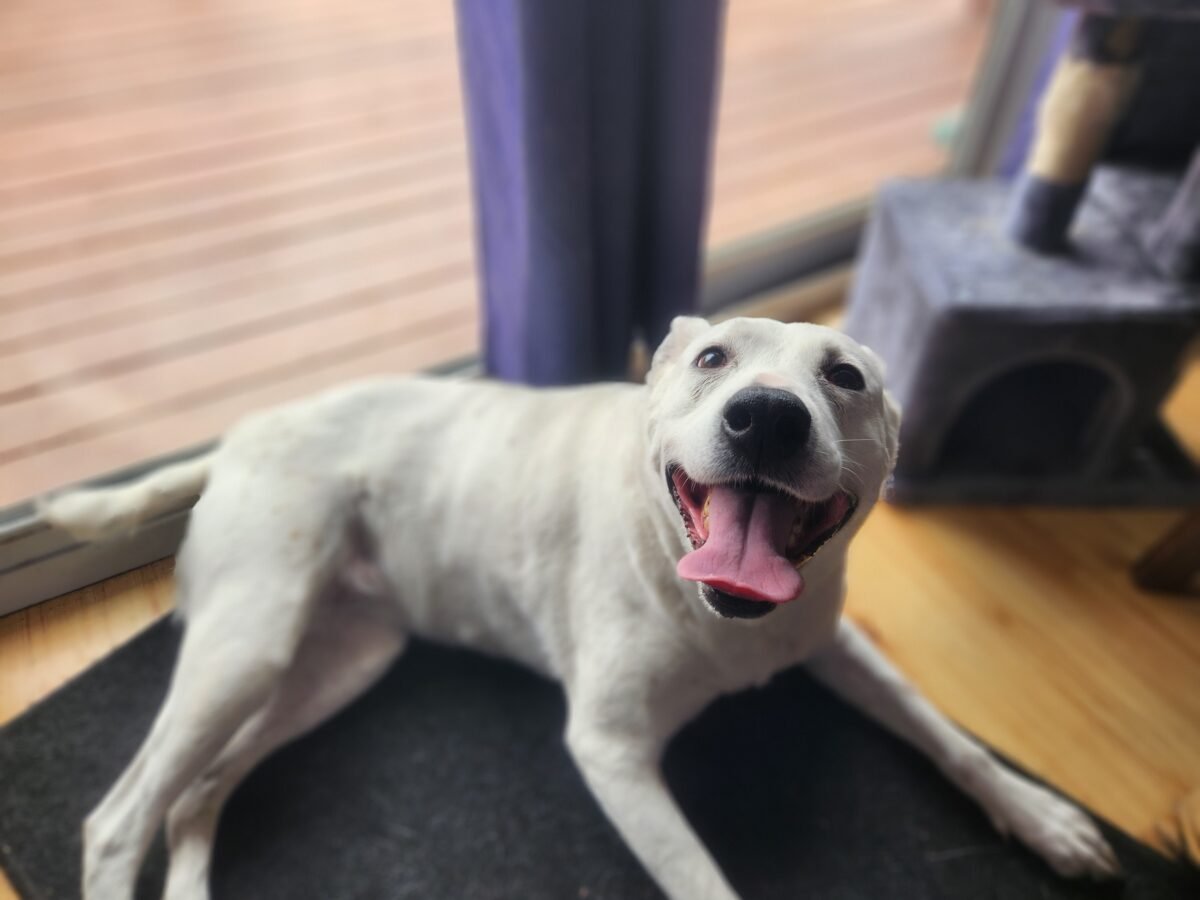
Since then, we’ve added non-slip grip pads and extra lighting to help her feel safe. We still carry her on tough days. She’s not the same fearless dog she once was, but with a few small changes, she’s able to move around the house with comfort and confidence.
4. Make It Bright: Improve Visibility
Poor lighting can turn even the safest stairs into a hazard for dogs, especially seniors with declining vision. Dogs rely on contrast and consistency to navigate steps, and low-light conditions can cause hesitation, confusion, or dangerous missteps.
Add Simple Lighting Upgrades
Lighting is one of the easiest and most effective safety enhancements you can make. Install motion-sensor LED lights along stair risers, walls, or handrails to give your dog a clear visual path without needing to leave lights on all night. Battery-operated puck lights or adhesive strip LEDs are affordable and easy to install, making them suitable for even rental spaces.

Use Contrast to Define Edges
Dogs with vision loss often struggle to judge stair depth. To make each step more visible, apply high-contrast stair nosing or bright, reflective tape, such as duct tape, to the edge of each tread. Yellow, white, or neon-colored strips work best against darker stair surfaces.
This simple upgrade helps dogs visually distinguish where one step ends and the next begins, reducing missteps and boosting confidence.
Why It Matters for Older Dogs
As dogs age, they may develop conditions like cataracts or night blindness, making it hard to navigate dim areas. A well-lit, clearly defined staircase can dramatically reduce anxiety and lower the risk of falls, especially in the evening when many accidents happen.
Improving visibility is an easy win in your dog stair safety plan and helps ensure your pet feels confident using the stairs at any time of day.
5. Carrying Your Dog: A Safer Option for Steep or Slippery Stairs
Feeling strong? The easiest way to get a pint-sized pup down the stairs is to carry him. With a good grip on your dog, you can help your dog skip the stairs altogether. Plus, it’s a good cardio workout!
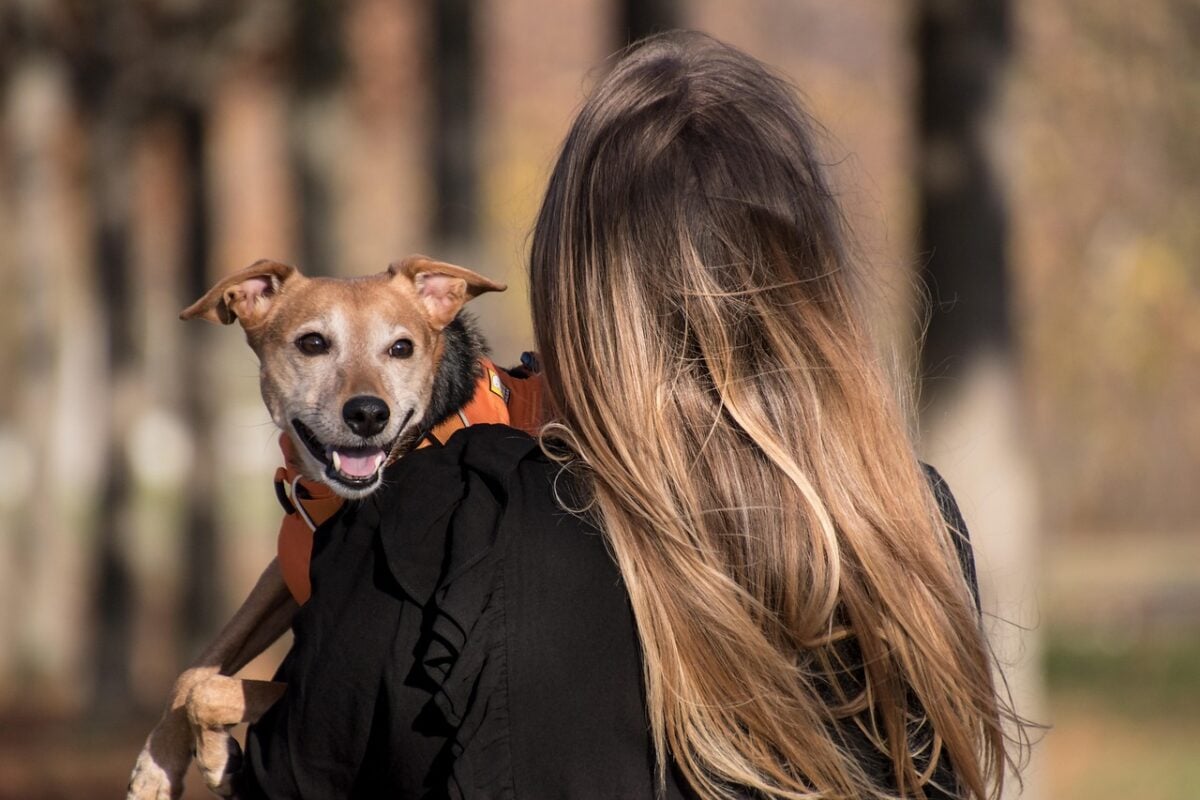
I often use this method when hiking with my dog, who is a smaller Poodle Beagle mix. We frequently explore our state parks, and there are often steep outdoor stairs or metal staircases with significant gaps between the steps. These are very challenging for him. So, I pick him up and carry him up and down these kinds of stairs.
If you have a wiggler or your pup doesn’t play nice when being carried, you can always use a travel kennel. Simply load your dog in the kennel and shut the door. It doesn’t matter how much your dog barks or wiggles; you won’t drop him.
Once you have carried the kennel up the stairs, open the door and let him back out.
Have a larger dog? Check out our next recommendation instead…
6. Lift & Support: When Your Dog Needs Help
Larger dogs, like Labradors or German Shepherds, often experience hip or joint problems as they get older. Old age isn’t kind to the joints. And neither are stairs.
When going up the stairs, your pup places weight on his hind quarters. To put it simply, going up and down stairs hurts. In extreme cases, some dogs find climbing the stairs so painful that they avoid it altogether.
Fortunately, you can help take the weight off your dog’s hind legs by using a dog sling. We recommend the PetSafe CareLift Support harness.
Loop the sling around your pup’s rear and lift. The sling supports your dog’s back-end, keeping weight off inflamed hips and joints. Your dog can now walk up your stairs without discomfort.
7. Install a Ramp: When Stairs Just Aren’t an Option
For some dogs, stairs are simply too risky or physically impossible. In those cases, a ramp can offer a safer, more manageable way to move between levels. Whether it’s a few porch steps or a flight of indoor stairs, ramps are ideal for dogs with chronic pain, mobility issues, or post-surgical recovery needs.
Since ramps reduce the pressure placed on your dog’s hips and hind legs, they are ideal for older dogs. Best of all, there is no slipping – pet ramps feature a non-slip coating to stop your pup sliding back down.
– Dr. Sara Ochoa, DVM, Small Animal Veterinarian
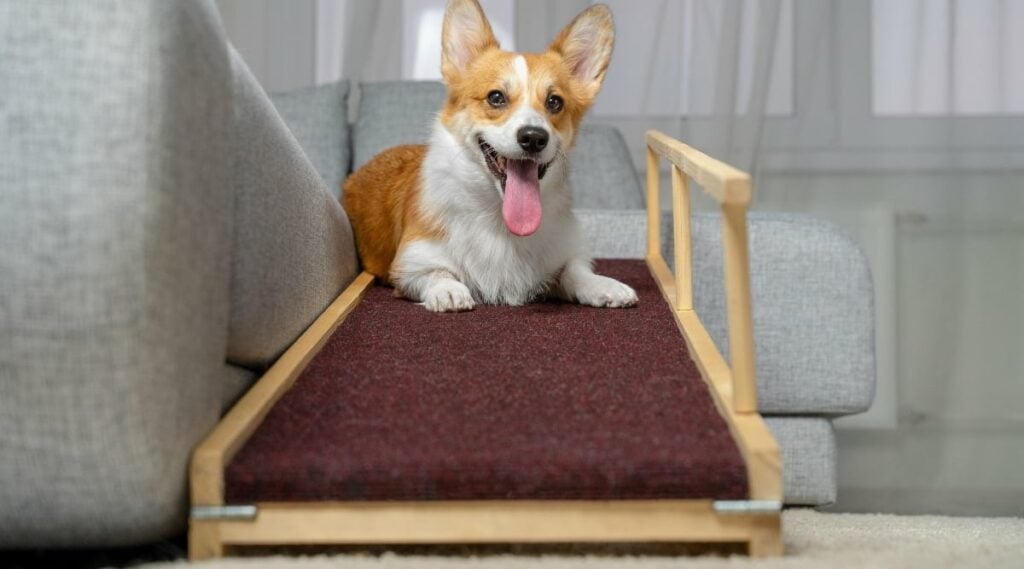
When to Choose a Ramp Over Stairs
Consider replacing stairs with a ramp or adding one alongside them if your dog:
- Has arthritis, hip dysplasia, or limited joint mobility
- Struggles with balance or coordination
- Hesitates or refuses to use stairs, even with traction and training
- Is recovering from surgery or injury
- Uses a wheelchair, sling, or other mobility aid
- A dog is a smaller breed that’s prone to jumping or falling
Ramps help reduce impact on joints and create a smoother transition, especially for senior dogs or long-bodied breeds like Dachshunds and Corgis.
5 Tips to Train Your Dog to Use a Ramp Confidently
Even if the ramp is the safer choice, not all dogs take to it immediately. The key is gradual, positive reinforcement:
- Start flat: Place the ramp on the floor first and let your dog walk across it to build comfort with the surface. Use treats and praise.
- Raise it gradually: Slowly increase the angle over several days, allowing your dog to adjust.
- Use a leash or harness for support: Walk alongside your dog the first few times so they don’t feel unstable.
- Keep it stable and slip-resistant: Make sure the ramp is secure, and use non-slip surfaces to build your dog’s confidence.
- Reward generously: Treats, praise, and calm encouragement go a long way in building positive associations with the ramp.

With the right ramp and patient training, your dog can regain independence and avoid the dangers that come with stairs.
While many pet ramps are designed to help dogs get in and out of cars, they also work exceptionally well as a stair aid. We like the PetSafe Happy Ride extra-long version.
Suitable for stairs with fewer than five steps, installation couldn’t be easier – set up can be done in seconds. All you need to do is lay the ramp over your stairs.
8. Train Smart: Teach Stair Safety Skills
While physical changes to your home are important, behavior plays a big role in stair safety too. With the right training, you can help your dog gain confidence, learn boundaries, and develop safer habits when navigating stairs or avoiding them entirely when necessary.

Desensitization for Anxious Dogs
If your dog hesitates, trembles, or refuses to use the stairs, they may not be stubborn; they might be afraid. Desensitization training can help reduce anxiety over time.
Start by sitting near the stairs and rewarding calm behavior. Gradually lure your dog one step at a time with treats, without forcing them. Allow them to retreat if they seem overwhelmed. Over several short sessions, build trust and positive associations with the stairs.
Boundary Training to Limit Unsupervised Access
Training your dog to wait for permission before using the stairs can prevent impulsive or unsafe movement, especially when you’re not nearby. This is known as boundary training or invisible barrier training.
Here’s a quick tutorial on how boundary training works:
Use a consistent verbal cue like “wait” or “stop” at the top or bottom of the stairs. Reinforce the command with treats or praise when your dog pauses. Over time, this can help them learn not to bolt up or down without you.
For added control, consider pairing this training with a gate or barrier during the early stages.
One particularly clever owner we spoke to during our dog doorbell review trained her dog to ring a bell for assistance. When the dog wanted to come up the patio steps, she would ring the bell and wait patiently for her owner to come and help her.
Reinforce Safe Stair Behavior
Even for dogs that seem confident on stairs, it’s important to reinforce good habits like:
- Walking calmly up and down (not rushing or jumping)
- Using all four feet (not hopping down front-first)
- Waiting for your cue before going
- Avoid carrying toys or distractions that affect balance
Use treats, verbal praise, and consistency to reward these behaviors daily. Stair safety becomes second nature when it’s part of your dog’s regular training routine.
Your Dog Stair Safety Checklist: 10 Steps
Before you go, use this quick checklist to make sure your stairs are truly dog-safe. Even small improvements can make a big difference in preventing injury and reducing stress for your pup.
- I’ve had my dog evaluated by a vet for joint, vision, or balance issues
- Pet gates or barriers are installed where needed
- Stairs have non-slip treads or a carpet runner
- Traction aids (toe grips, paw wax, etc.) are used when needed
- The staircase is well-lit with a motion sensor or night lighting
- Stair edges are clearly marked with high-contrast tape or nosing
- A ramp is installed where stairs are too difficult or unsafe
- My dog is trained to wait before using the stairs and to walk calmly
- Stairs are free from toys, clutter, or tripping hazards
- I supervise stair use when needed, especially with senior or injured dogs
How do you stop your dog from hurting himself on the staircase? Got a tip to add? Let me know in the comments below!
Stay Proactive About Your Dog’s Stair Safety
As your dog ages or their needs change, so should their environment. Stairs that once posed no problem can become a serious risk if your dog develops joint pain, vision issues, or balance problems. The key is to stay alert, watch for subtle signs like hesitation on stairs, slipping, limping, or increased anxiety around steps. These may be early indicators of a physical issue that deserves attention.
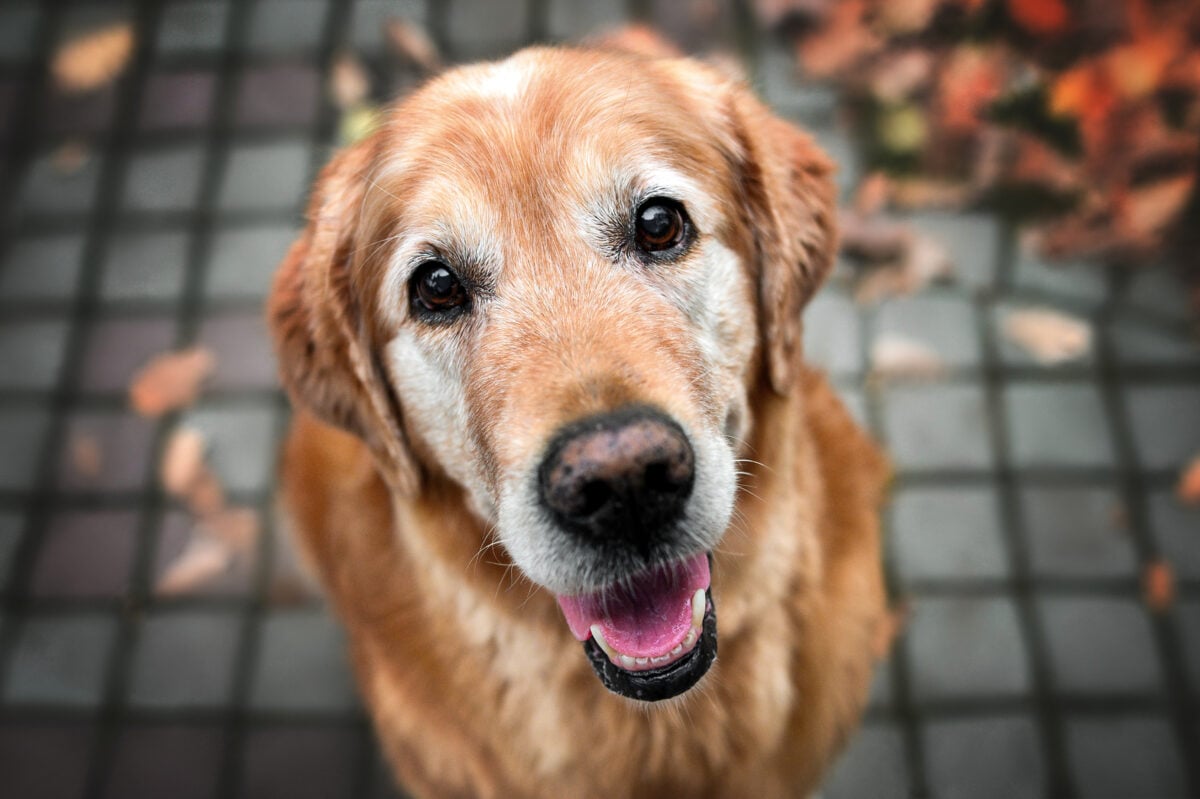
Don’t wait for a fall to make changes. Whether it’s adding a gate, installing non-slip treads, or introducing a ramp, minor modifications can have a significant impact on your dog’s safety and confidence.
Regular vet checkups, joint support, and training all play a role, but it’s your awareness and action that make the most significant difference. By being proactive and adapting your home as needed, you’re giving your dog the best chance at a safe, mobile, and happy life, one step at a time.
Ready to Support Your Dog’s Bone and Joint Health
Keeping your dog’s bones and joints strong is one of the most effective ways to prevent mobility issues, including stair-related injuries. As dogs age, they naturally lose muscle mass and joint fluid, which can increase the risk of arthritis, stiffness, or falls. The earlier you start focusing on joint health, the better your dog’s long-term mobility will be.
A balanced diet plays a critical role. Choose high-quality dog food formulated for your dog’s life stage and size, and look for ingredients that support joint health, like omega-3 fatty acids (from fish oil), glucosamine, and chondroitin.
If your dog is older, overweight, or showing early signs of stiffness, talk to your vet about adding targeted supplements. Maintaining a healthy weight is especially important; excess pounds put additional stress on joints, especially when climbing stairs.
Daily movement and low-impact exercises, such as flirt poles and barn hunting, help keep joints lubricated and muscles strong. Regular walks, gentle play, and activities such as swimming or underwater treadmill therapy can help improve circulation and prevent stiffness. Avoid activities that involve jumping or sudden stops, especially on hard surfaces. And don’t underestimate the value of soft, orthopedic bedding; giving your dog proper rest and support is just as important as active care.

